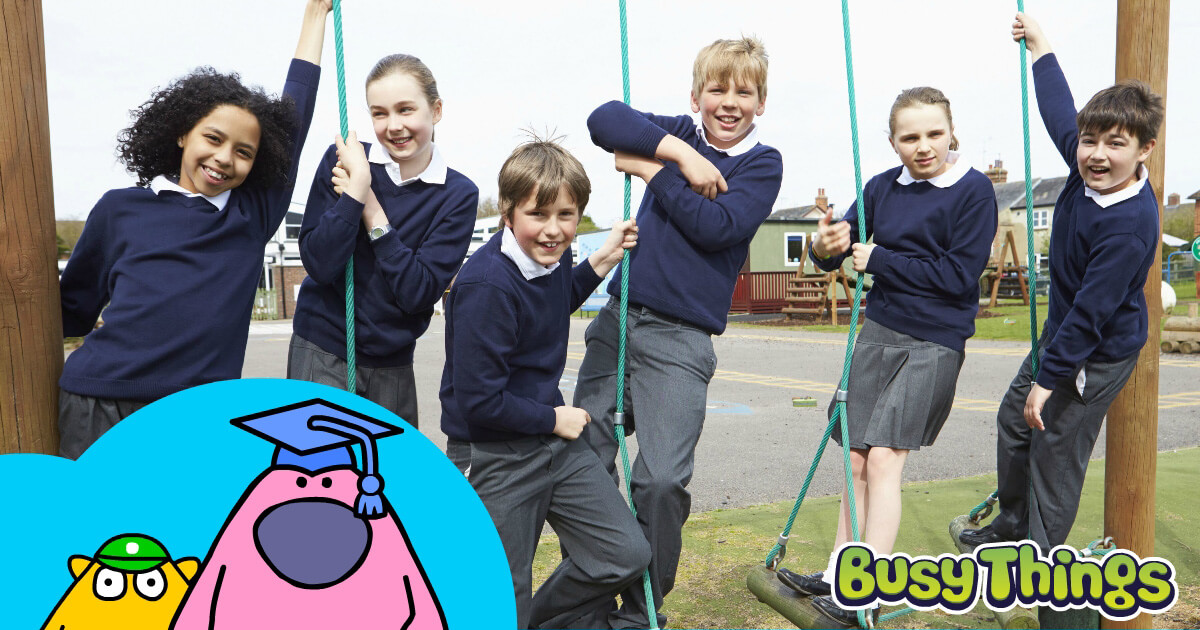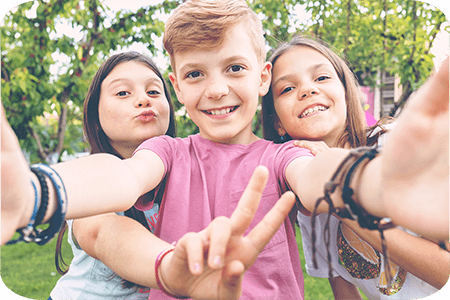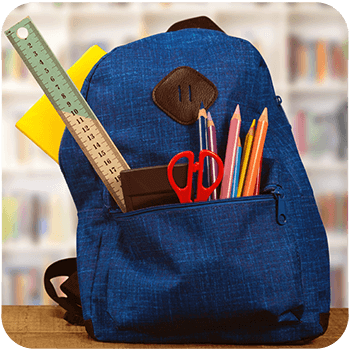Supporting Your Year 6s’ Transition to Secondary School

Making the move to secondary school is a huge milestone in an 11-year-old’s life. After spending several years cosseted in the same local primary school, moving to a larger school with all its unknowns can be as daunting as it is exciting.
The secondary schools will, of course, be in contact with you to understand their new Year 7s’ strengths, weaknesses and needs (which if you feed into several schools can be complex in itself!) and will organise transition days for the pupils at their new schools. Most children will be keen to visit but remember to encourage those that are anxious about doing so too. The level of familiarity they’ll gain will undoubtedly help in September. Besides working with the Year 7 Lead, however, much of the process may feel beyond your control. This blog focuses on what you can do to make the children’s transition to secondary school as smooth as possible as the children’s current primary school teacher.
And there’s no better time than now, with SATs done and dusted, to put some plans into action. Your pupils will thank you for it in September as they walk confidently into their new schools in their smart new, slightly uncomfortable, blazers.
The benefits of a good transition
The transition to secondary school has two key areas of focus:
- Marking the end of an era and celebrating pupils’ time at primary school
- Preparing pupils for the opportunities and inevitable challenges they’ll face
Most schools fare well on the first element, but many less so on the second.
What should the transition to secondary school include?
Celebratory events and mementos
The end of Year 6 provides a natural break in a child’s education and, if you look back at Day 1, the children will have changed significantly. It’s great to showcase the talents the children have acquired along the way in a Year 6 performance or play or share memories and achievements in an award ceremony. Be mindful to be inclusive though, as not all children are academic or sporty. It may be useful to look at the values that your school engenders, such as resilience, fairness and kindness for some of the awards.
You might also like to ask your pupils what their favourite things from primary school have been and celebrate these! This could be a favourite teacher, a particularly fantastic school trip or, dare we say it, playing on Busy Things!

A party of some kind is also a must. This can be for the children on their own, or extend to their families too, depending on what suits your local community best. Events can range from beach-themed parties, silent discos and sleepovers indoors, to race nights, rounders evenings and inflatable fun outside. They’re usually held somewhere within the school or on the school field for ease and cost.
Last but not least, a keepsake is always appreciated. Again, this can be as simple as allowing the children to use their T-shirts as an autograph book on the last day of school (best to ensure parents are happy with this!) or as involved as a US-style yearbook. T-shirts and hoodies with all the Year 6 children’s names on are also a popular option.
Emotional and practical preparations
What this should entail largely depends on the traits that you think your pupils need to develop to succeed at secondary school, but as a general rule of thumb, secondary school teachers expect their students to be independent, organised and resilient to learn successfully, so these are the skills we’ve concentrated on. Read on as we look at what each means in practical terms, and how you as a Year 6 teacher can hone these skills in the last few weeks of term.
Independence
Many children in Year 6 still rely on teachers and parents to a high degree, expecting their parents to send them in with everything they need and for teachers to tend to their ongoing needs for pencils, reading books and guidance throughout the day.
At secondary school, your pupils will be expected to turn up ready to learn, with homework completed and everything they need from P.E. kit to cooking ingredients stowed safely away in their bags. If something goes wrong, teachers will want them to have thought of a solution themselves before raising the issue with them.
Develop this trait in Year 6 by giving the children extra responsibilities, letting them make their own decisions about how they learn and present their work, and encouraging them to think for themselves.
Organisational skills
In most primary schools, children are local to the school and taught in the same classroom all week. On first moving to a secondary school, getting to school (potentially using the school bus), navigating around the site and keeping to a strict timetable can seem challenging to say the least.

On this one, practice most definitely makes perfect! The transition days will help familiarise children with the school’s layout. And, if children are walking, they should be encouraged to test out and time their route to school to ensure they 1) know the way and 2) leave in sufficient time. It’s a bit trickier if there’s a bus involved as they probably can’t practice. If they know someone older who takes the same bus, however, it would be a good idea for them to ask if they can go with them for the first few days.
In the classroom, practice tasks such as packing for a holiday are great for getting the children to plan ahead, encouraging them to think about what they’ll be doing, what they’ll need to do those things, how they’ll get there and how long they need to do so.
Resilience
Secondary school will be challenging. There’s not just the transition, learning more advanced concepts is going to stretch pupils too. Not everything will come easily to all pupils. In many areas, the changes will be a jump rather than a smooth transition. By developing your children’s resilience, however, you’ll be preparing them for the challenges that lie ahead of them.
Being able to recover from a difficulty or setback is essential for everyone. By giving children an understanding of what resilience is and the obstacles they may face, they’ll be more confident to deal with them when they arise.
A good starting point might be to simply ask the class:
- what they think the differences between primary and secondary school will be
- what they are looking forward to most about secondary school, and
- which areas they’re concerned about
Stress that it’s quite natural to have questions, worries and doubts, and that finding information out about those areas can allay their fears. Practical things like how to get to school are quite simple to tackle (as we’ve covered earlier); changes to friendships can be trickier. Make sure that the children know where to go to get help and that they are not alone. Websites like BBC Bitesize are great for normalising the issues and often have well-known people talking about how they felt and resolved the issues they faced.
What should you look out for?
When structuring your school’s transition plan, the children and their needs should obviously come first.
For children going to a secondary school with lots of their peers, it’s great for their confidence if they can move up with at least one friend in their class. If children are going to different schools to their classmates, ensure they’re prepared. Encourage them to make friends early by chatting to people that they sit next to in class, and to join clubs, where they’re most likely to meet people that enjoy the same things as them.
Ensure everyone is prepared. Some children, especially those with siblings, may come across as confident and not show their anxiety externally. It could still be something that they are feeling, however, or feel nearer the actual time, so they’ll still appreciate having an understanding of how to take stock and bounce back.
Summary
We hope you’ve found this blog helpful and that it’s either provided you with new ideas or affirmed that what you’re doing now is valuable, so that you can wave your pupils off at the end of the academic year knowing that they are as prepared as possible for all that secondary school brings.
If you’ve any tried and tested suggestions of your own to add, we’d love to hear them, so please do leave a note in the Comments section below.
Good luck!
This blog was revised and updated in June 2025.